
The white-throated toucan is a near-passerine bird in the family Ramphastidae found in South America throughout the Amazon Basin including the adjacent Tocantins and Araguaia River drainage. It prefers tropical humid forest, but also occurs in woodland and locally in riverine forest within cerrado.
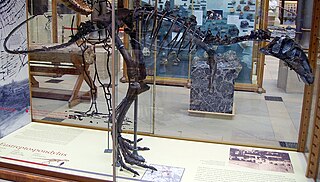
Eustreptospondylus is a genus of megalosaurid theropod dinosaur, from the Oxfordian stage of the Late Jurassic period in southern England, at a time when Europe was a series of scattered islands.
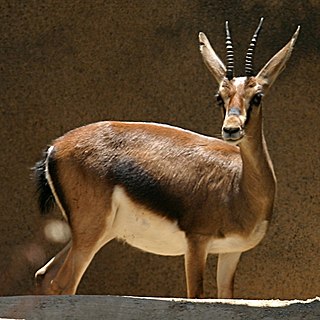
Cuvier's gazelle is a species of gazelle native to Algeria, Morocco, Western Sahara, and Tunisia. It is also known as the edmi. It is one of the darkest gazelle species, possibly an adaptation to its partial woodland habitat. It is sometimes placed into the genus Trachelocele together with the goitered gazelles and the rhim gazelles.

Streptospondylus is a genus of tetanuran theropod dinosaur known from the Late Jurassic period of France, 161 million years ago. It was a medium-sized predator with an estimated length of 6 meters (19.5 ft) and a weight of 500 kg (1,100 lbs).
Cuvier's spiny-rat is a spiny rat species found in Brazil, French Guiana, Guyana, Peru and Suriname.

The Titicaca orestias, Lake Titicaca orestias, or Lake Titicaca flat-headed fish, also known by its native name amanto, is a likely extinct freshwater killifish from Lake Titicaca in South America. It belongs in the pupfish genus Orestias, endemic to lakes, rivers and streams in the Andean highlands. With a total length of up to 27 cm (10.6 in), it was the largest member in that genus. In the hope that an undiscovered population remains, it is listed as Data Deficient by the IUCN. Despite its common name, it is not the only Orestias from Lake Titicaca.

The genus Dryolimnas comprises birds in the rail family. The Réunion rail, a member of this genus, became extinct in the 17th century. The white-throated rail of Aldabra is the last surviving flightless bird in the western Indian Ocean. They are mostly found on Malabar Island, but can also be found on Polymnieli Island and other islands.

Talegalla is a genus of bird in the family Megapodiidae. First described by René Primevère Lesson in 1828, it contains the following species:
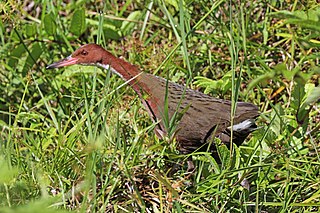
The white-throated rail or Cuvier's rail, is a species of bird in the family Rallidae.
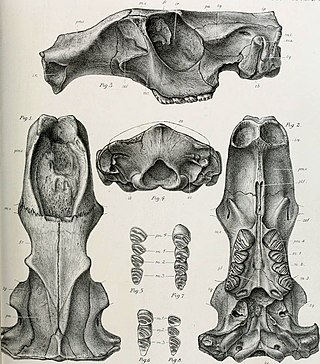
Trogontherium is an extinct genus of Eurasian giant beavers that lived from the Late Pliocene to the Late Pleistocene. Fossils of Trogontherium have been found across northern Eurasia, from Western Europe to China and Siberia.

The Japanese white crucian carp, also known as Japanese carp, white crucian carp, or gengoro-buna, is a species of freshwater fish in the carp family. It is found in Japan and, as an introduced species, in several other countries in Asia. This fish is closely related to the commonly known goldfish.

Oplurus cuvieri, commonly known as the collared iguana, the collared iguanid lizard, Cuvier's Madagascar skink, Cuvier's Madagascar swift, and the Madagascan collared iguana, is a species of arboreal lizard in the family Opluridae. The species is native to Madagascar and Comoros. There are two recognized subspecies. O. cuvieri is the largest of six species in the genus Oplurus.

Cimoliopterus is a genus of pterosaur that lived during the Late Cretaceous in what is now England and the United States. The first known specimen, consisting of the front part of a snout including part of a crest, was discovered in the Grey Chalk Subgroup of Kent, England, and described as the new species Pterodactylus cuvieri in 1851. The specific name cuvieri honours the palaeontologist George Cuvier, whereas the genus Pterodactylus was then used for many pterosaur species that are not thought to be closely related today. It was among the first pterosaurs to be depicted as sculptures, in Crystal Palace Park in the 1850s. The species was subsequently assigned to various other genera, including Ornithocheirus and Anhanguera. In 2013, the species was moved to a new genus, as Cimoliopterus cuvieri; the generic name Cimoliopterus is derived from the Greek words for "chalk" and "wing". Other specimens and species have also been assigned to or synonymised with the species with various levels of certainty. In 2015, a snout discovered in the Britton Formation of Texas, US, was named as a new species in the genus, C. dunni; the specific name honours its collector, Brent Dunn.

Anolis cuvieri is a species of lizard in the family Dactyloidae. The species is endemic to Puerto Rico, and is common in the Toro Negro State Forest.
Phacellini is a tribe of longhorn beetles of the subfamily Lamiinae.
Phacellus is a genus of longhorn beetles of the subfamily Lamiinae, containing the following species:
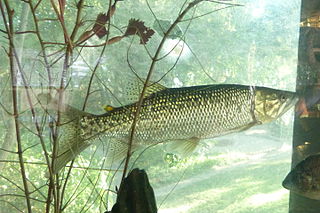
Hepsetus cuvieri, sometimes known as the African pike or Kafue pike characin, is a predatory freshwater fish found in southern Africa. This species was described in 1861 by the French naturalist Francis de Laporte de Castelnau.
Phacellus dejeani is a species of beetle in the family Cerambycidae. It was described by Buquet in 1838. It is known from Brazil.
Phacellus fulguratus is a species of beetle in the family Cerambycidae. It was described by Monné in 1979. It is known from Brazil.

Inoceramus cuvieri is an extinct species of the extinct genus Inoceramus of Bivalve mollusks that serves as an index fossil of chalky rocks of Turonian age of the Cretaceous Period in Europe and North America.














